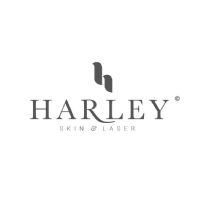As with all good vein surgery, and has now recommended by the National Institute of Health and Clinical Excellence (NICE) in their clinical guidelines CG168, all patients with varicose veins and any symptoms or signs should be assessed by a team of experts. There should be a doctor who examines the patient and decides if it is a vein problem. If it is, then the patient should undergo venous duplex ultrasonography by a specialist (usually a vascular technologist) who specialises in venous duplex ultrasound. Many "cut-price" vein services still exist where doctors do their own duplex ultrasound. Not only are these breaking the NICE guidelines, but research presented in New York several years ago shows that when doctors do their own scans, they miss at least 30% of the problem veins.
Once the specialist vascular technologist has performed a venous duplex, usually taking about 20 minutes per leg, the doctor will see the patient again along with the scans. If the deep veins are working normally, and the varicose veins are actually due to reflux (valves not working) in the truncal veins or perforating veins, radiofrequency ablation or endovenous laser ablation will be recommended for the truncal veins and TRLOP for the treatment of the incompetent perforating veins.
Any surface veins will need to be treated either by removal (phlebectomy) if very large or by injection of sclerotherapy (foam sclerotherapy or liquid sclerotherapy) if smaller.
A medical history will be taken to make sure that there are no reasons why you are not suited to be treated with RFA. Then you would normally be asked to sign a consent form, which means that you have understood what the treatment may do, and the potential side effects.
Photographs may also be taken by the practitioner that can be used as a “before and after” comparison to show you how successful your treatment has been from a cosmetic perspective.
The Procedure
Since 2005, endovenous thermoablation in modern vein clinics and vein practices has been performed under local anaesthetic only, with no general anaesthetic or sedation. In America, this is called "ambulatory surgery" as you literally walk-in and walk-out.
The patient who has already been consented and understands what is going to happen, gets undressed and is taken into the operating theatre. An ultrasound is performed to mark the veins that are going to be treated with radiofrequency ablation as well as any surface veins that might be removed with phlebectomy at the same operation.
The skin of the leg is prepared and sterilised using a special disinfectant fluid, and the patient is covered with surgical drapes to keep the surrounding area sterile.
The bed is tipped head up, to fill the vein with blood. Using an ultrasound probe covered with a sterile cover, the vein is identified. Local anaesthesia is injected under the skin and a needle is passed into the vein. Once the needle is in the vein, a wire can be passed down the needle, a larger catheter can then be passed over the wire and through this and the radiofrequency catheter can be introduced into the vein. This is then passed up the vein to the top, usually in the groin or in the small saphenous vein, in the back of the knee. The ultrasound is used to position the catheter precisely.
The patient is then tipped head down to empty the vein completely. Ultrasound is used to guide local anaesthetic injections to surround the vein with tumescent local anaesthetic.
Once this has been completed the radiofrequency is turned on. Depending on the machine, the vein might then be closed in steps (segments) or might be closed with a constant pullback of the device at a set rate.
In the best practices where a surgeon works with a vascular technologist, the vascular technologist continues to scan the vein during treatment to ensure that the vein is closing adequately. This means that if for any reason the vein does not close, further treatment can be performed immediately.
Once the vein has been closed, any further veins that need treatment can be close the same way. TRLOP will be performed on any incompetent perforators using a very similar technique but, as perforating veins are very small, this is much quicker.
Finally, any bulging surface veins are removed under local anaesthetic using very small holes and hooks. No stitches need to be used at all as all of the incisions are so small nowadays.
Little clasps are placed on all of the wounds, a light bandage placed around the leg to catch any local anaesthetic that may go through the wounds and patients are usually discharged with a stocking covering the bandage.

